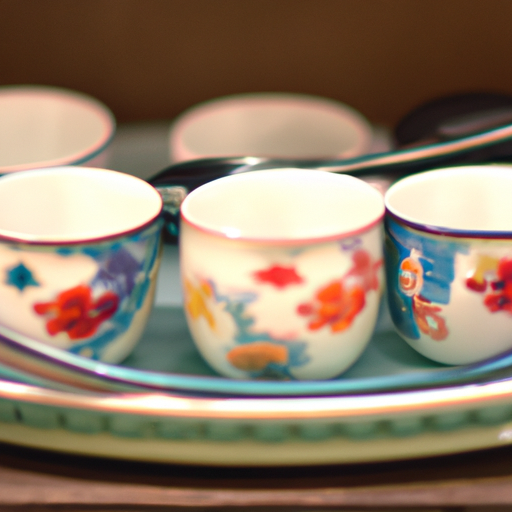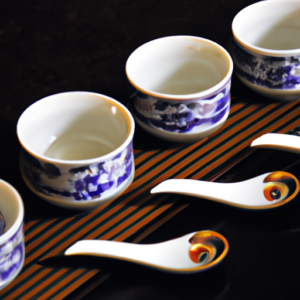
The Spoon and Tea Connection: Exploring Tea Traditions from Around the World
“Discover the World of Tea – A Journey of Taste and Tradition!”
Introduction
The Spoon and Tea Connection is an exploration of tea traditions from around the world. From the ancient tea ceremonies of Japan to the modern tea culture of the United Kingdom, this book takes readers on a journey through the history and culture of tea. Through stories, interviews, and photographs, readers will learn about the different ways tea is enjoyed around the world and the unique customs and rituals associated with it. From the health benefits of tea to the different types of tea available, this article provides an in-depth look at the fascinating world of tea.
Exploring Tea Traditions from Around the World: A Look at Tea Culture and Rituals

As a tea lover, I often find myself daydreaming about the different tea traditions from around the world. From the traditional Japanese tea ceremony to the British afternoon tea, each culture has its own unique way of enjoying this beloved beverage.
In Japan, the tea ceremony is a ritual that has been practiced for centuries. It is a way of honoring the guests and expressing gratitude for the tea. The ceremony is a meditative experience that involves preparing and serving the tea in a specific way. The tea is prepared with great care and attention to detail, and the ceremony is a way of expressing respect and appreciation for the tea.
In China, tea is an important part of the culture. Tea is served in many different ways, from the traditional Gongfu tea ceremony to the more casual tea houses. Tea is also used in traditional Chinese medicine, and it is believed to have many health benefits.
In Britain, afternoon tea is a beloved tradition. Afternoon tea is a light meal that is served in the late afternoon. It usually consists of tea, sandwiches, scones, and cakes. Afternoon tea is a way of taking a break from the day and enjoying a leisurely meal with friends.
In India, tea is an important part of the culture. Chai is a popular beverage that is made with black tea, milk, and spices. Chai is often served with snacks such as samosas or pakoras. Tea is also used in Ayurvedic medicine, and it is believed to have many health benefits.
No matter where you are in the world, tea is an important part of the culture. Tea is a way of connecting with others, and it is a way of expressing gratitude and appreciation. Tea is a beverage that has been enjoyed for centuries, and it is a tradition that will continue to be enjoyed for many years to come.
The Spoon and Tea Connection: Uncovering the Symbolic Meaning of Tea and Spoons in Tea Ceremonies and Rituals
The Spoon and Tea Connection: Uncovering the Symbolic Meaning of Tea and Spoons in Tea Ceremonies and Rituals
When it comes to tea ceremonies and rituals, there is something special about the connection between spoons and tea. From the ancient Chinese tea ceremony to the modern Japanese tea ceremony, spoons and tea have been used together to create a unique and meaningful experience.
The Chinese Tea Ceremony
The Chinese tea ceremony is one of the oldest and most well-known tea ceremonies in the world. It dates back to the Tang Dynasty (618-907 AD) and is still practiced today. In the Chinese tea ceremony, spoons and tea are used together to create a unique and meaningful experience.
The spoon is used to measure out the tea leaves, and the tea is then brewed in a teapot. The spoon is also used to stir the tea, and the tea is then served in small cups. The spoon is seen as a symbol of balance and harmony, and the tea is seen as a symbol of purity and peace.
The Japanese Tea Ceremony
The Japanese tea ceremony is a more modern version of the Chinese tea ceremony. It dates back to the 16th century and is still practiced today. In the Japanese tea ceremony, spoons and tea are used together to create a unique and meaningful experience.
The spoon is used to measure out the tea leaves, and the tea is then brewed in a teapot. The spoon is also used to stir the tea, and the tea is then served in small cups. The spoon is seen as a symbol of respect and humility, and the tea is seen as a symbol of purity and tranquility.
The Symbolic Meaning of Tea and Spoons
When it comes to tea ceremonies and rituals, spoons, and tea have a special connection. The spoon is seen as a symbol of balance and harmony, respect and humility, while the tea is seen as a symbol of purity and peace, tranquility and serenity. Together, they create a unique and meaningful experience.
Whether you’re participating in a traditional Chinese or Japanese tea ceremony, or just enjoying a cup of tea with friends, the connection between spoons and tea can be a powerful reminder of the importance of balance and harmony in our lives. So the next time you’re enjoying a cup of tea, take a moment to appreciate the symbolic meaning of tea and spoons.
Conclusion
The Spoon and Tea Connection: Exploring Tea Traditions from Around the World is an excellent resource for anyone interested in learning more about the history and culture of tea. It provides an in-depth look at the various tea traditions from around the world, from the origins of tea in China to the modern tea culture of Japan. It also offers insight into the various ways tea is prepared and enjoyed, as well as the health benefits associated with drinking tea. By exploring the various tea traditions from around the world, readers can gain a better understanding of the importance of tea in different cultures and how it has shaped the world we live in today.

